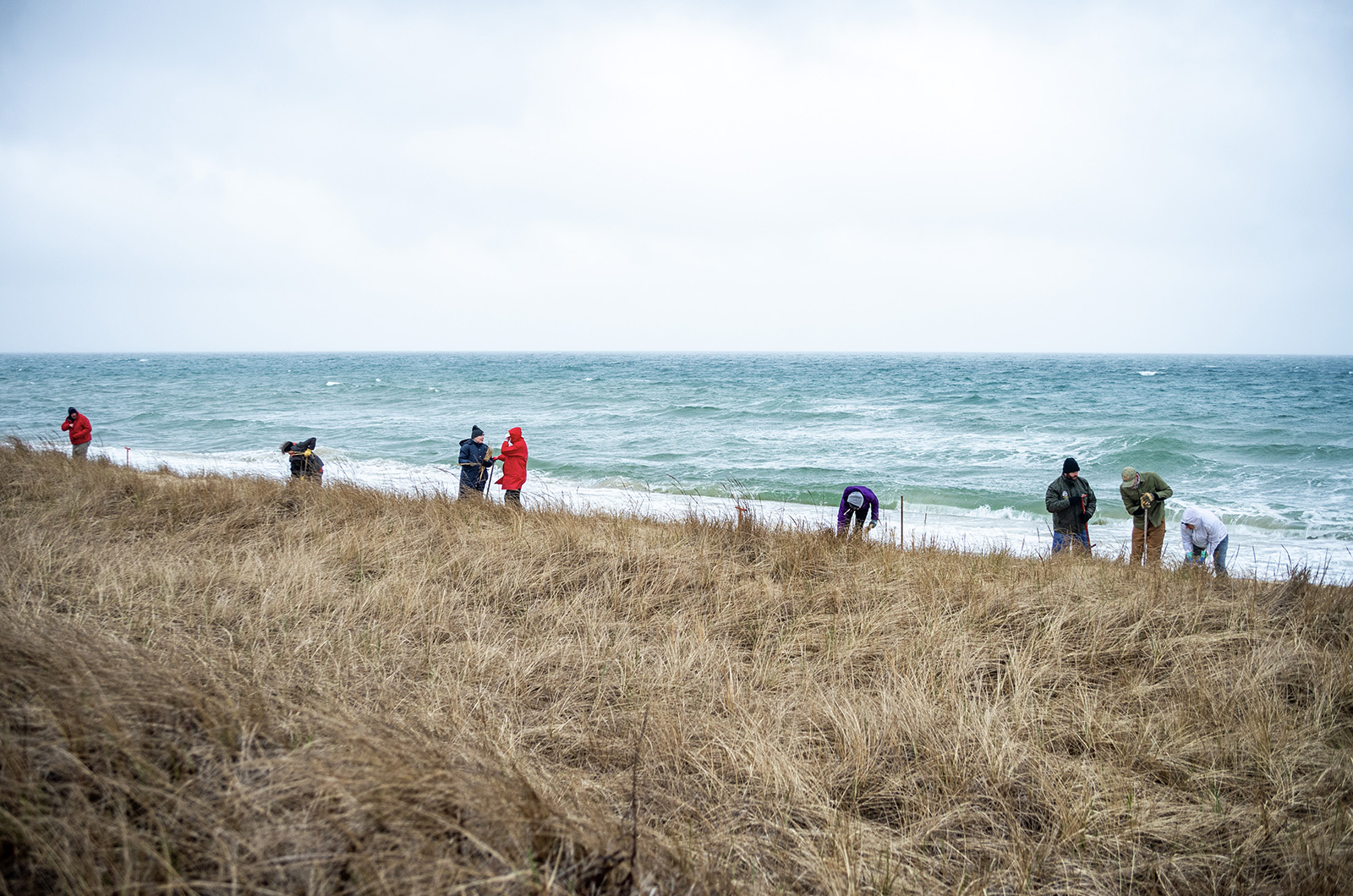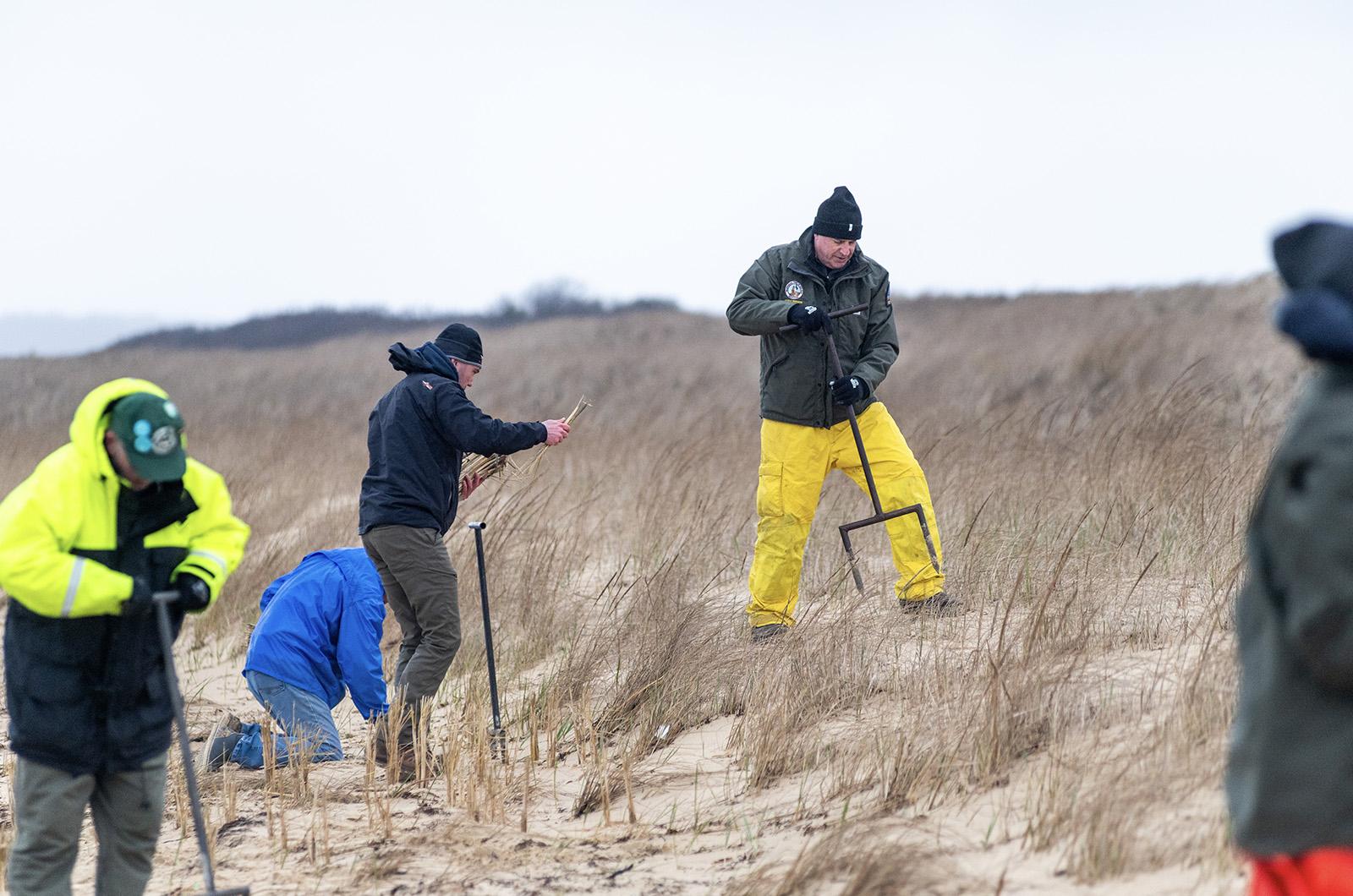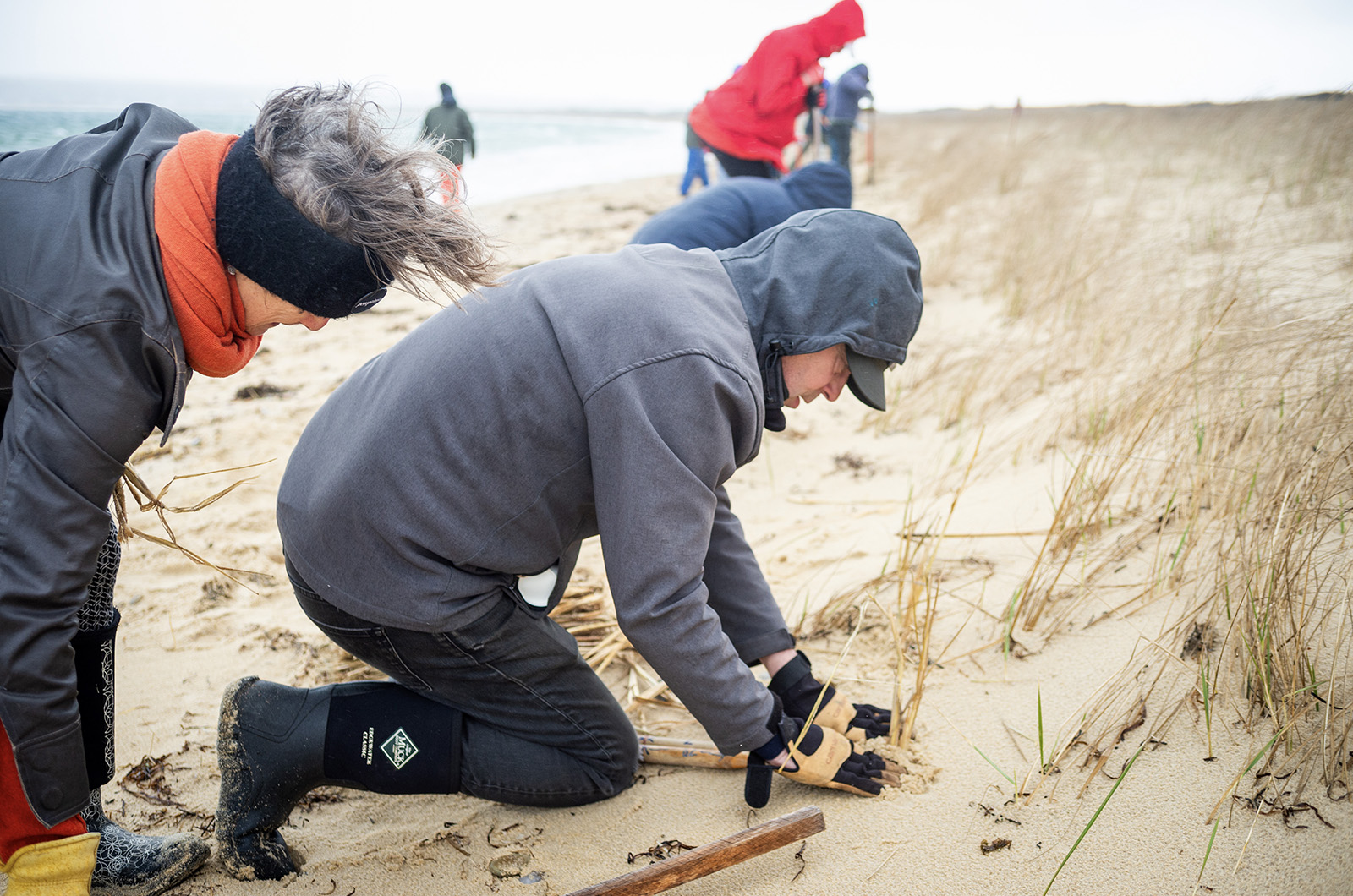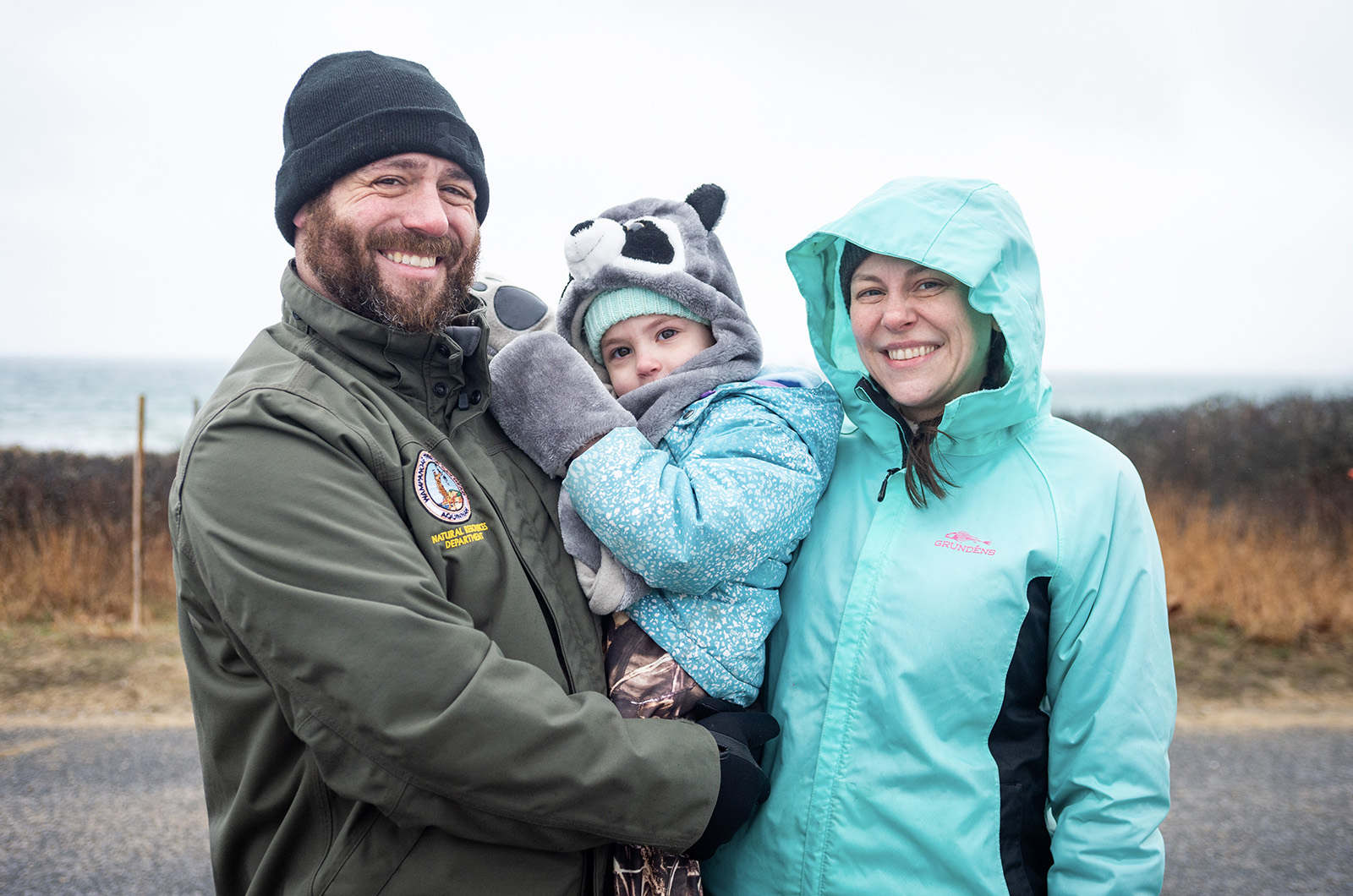The harsh wind and cold on Saturday morning did not deter Islanders who gathered at Lobsterville beach to plant restorative beach grass.
Roughly 35 people, working in pairs, drove metal stakes into the sand to create holes about six inches deep and then planted by hand — some gloved, others bare and trembling — the sharp blades of grass.
The annual event was started by the Wampanoag Tribe of Gay Head (Aquinnah) Natural Resources department after Hurricane Sandy devastated the beach. Bret Stearns, indirect services administrator for the department, said it took years for the Tribe to rally different funding sources to restore the beach.
“This area was completely decimated,” Mr. Stearns said.
Andrew Jacobs, the laboratory manager for the department, said over the past nine years the community has hand-planted over 200,000 stems, preserving a little over six acres of dune structure.
The beach grass, specifically called Ammophila breviligulata, acts as an essential buffer against sea water and high winds.
“This is an incredible plant that is something we overlook every single day,” Mr. Jacobs said. “But it’s the cause for the wonderful Island beaches that we have.”

Before the planting began, Chief F. Ryan Malonson thanked participants for helping conserve tribal lands. He recounted how when he was growing up, Lobsterville beach was a place where tribal children learned to swim and dig for clams.
“These features have given our tribal members subsidies and pleasure...” Chief Malonson said. “With climate change and erosion, now we have to try to preserve what we can up the beaches and all over the Island.”
He then led the group in a prayer to the Great Spirit, asking for help replenishing the beach.
To this day, the dunes continue to provide the Tribe with sustenance. The area hosts some of the last naturally occurring cranberry bogs in Massachusetts and is a popular hunting spot. Several endangered and threatened plant species also have their roots in the dunes.
“[Beach grass] is the line of defense that is protecting all these important inland resources,” Mr Jacobs explained.
For many volunteers, the event is an annual tradition.
Robert Lane, the former president of the Martha’s Vineyard surfcasters association, has been participating for approximately six years. He said he goes to Lobsterville beach to fish during the Martha’s Vineyard Striped Bass & Bluefish Derby and knows how important it is to the community.
“When you see what was lost during hurricane Sandy and what we’ve reclaimed since, that’s the reason [I come out] — to help get a little piece of the Island back,” Mr. Lane said.
Jo-Ann Taylor and Jana Bertkau, who are part of the Martha’s Vineyard Interfaith Climate Action Team, were happy to do their part Saturday morning.
“The Tribe has a lot of faith-based connection to the Earth and we appreciate that, which is why we’re here...” Ms. Taylor said. “We’re trying to help mitigate climate change as best we can.”









Comments
Comment policy »